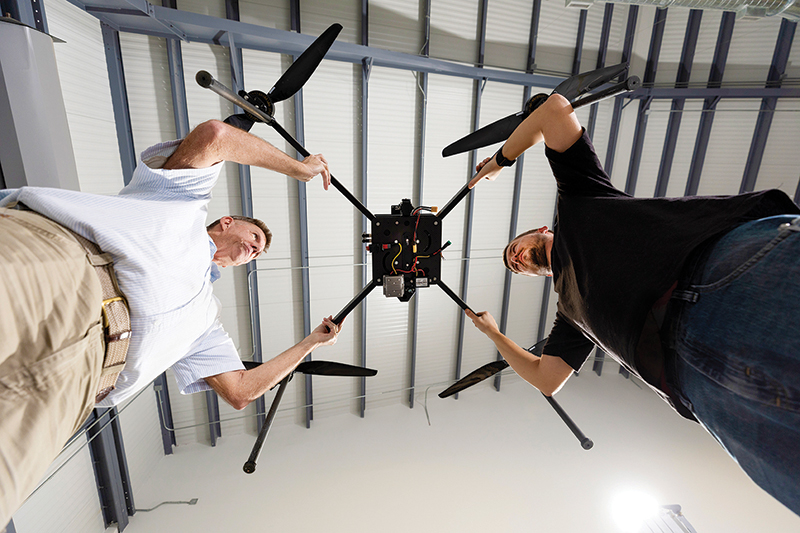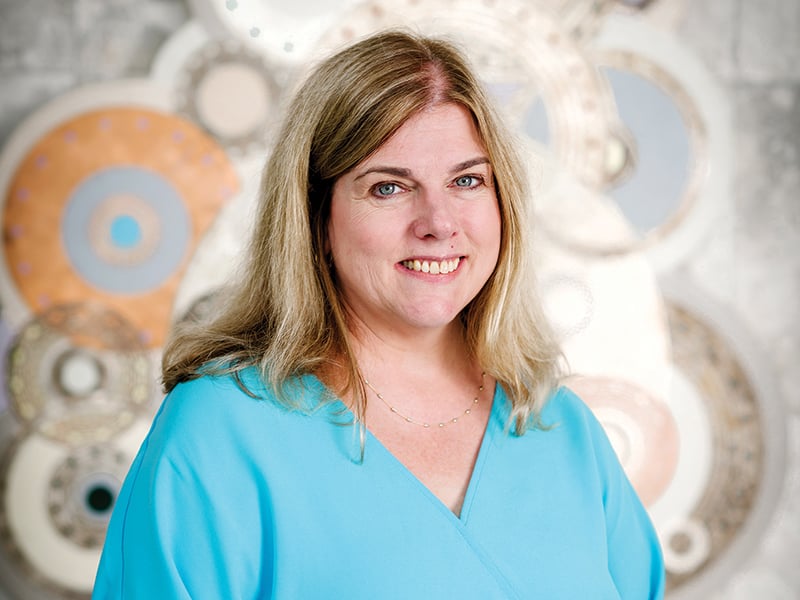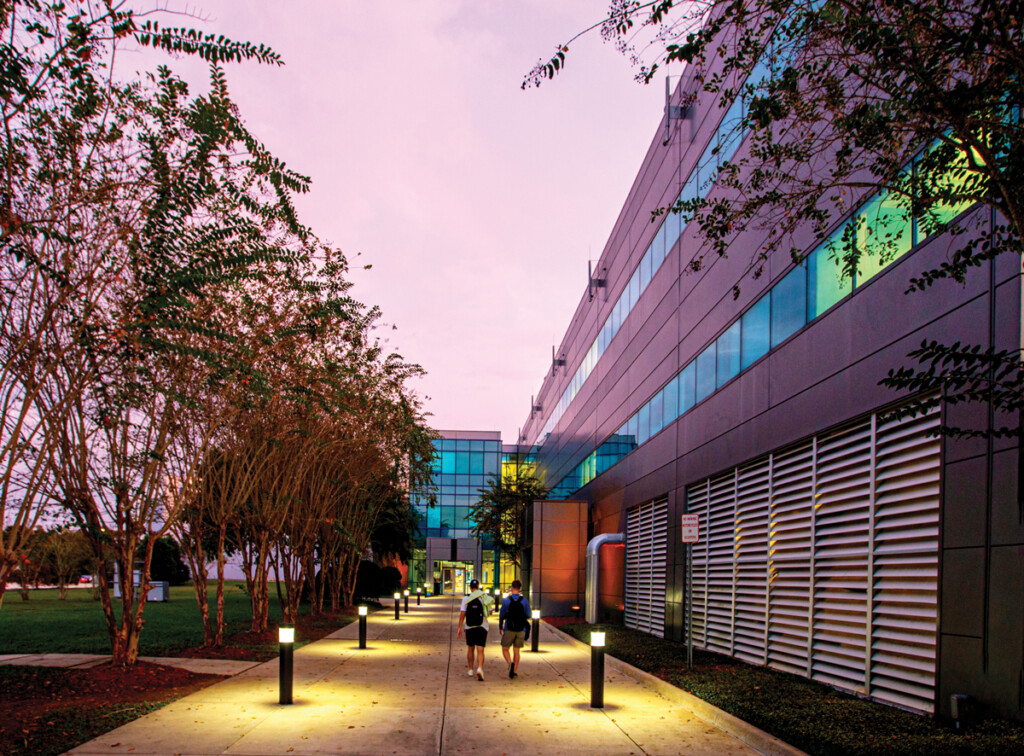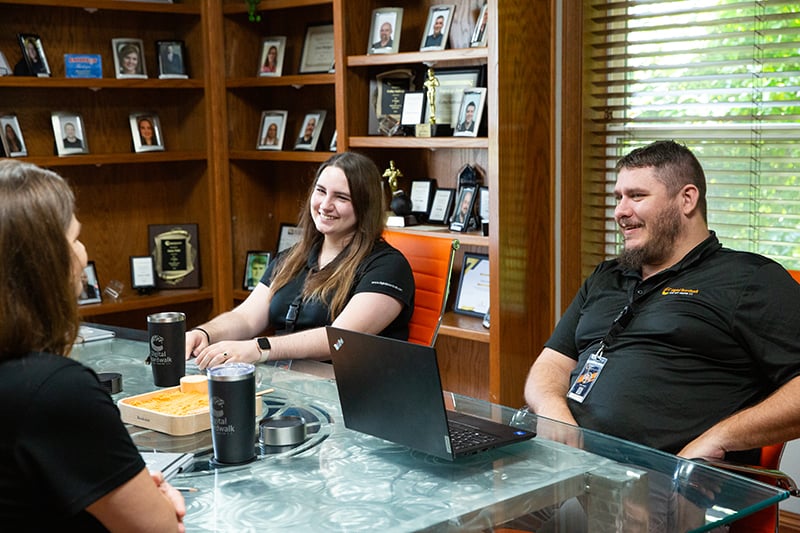Thinking Outside the Cart
Drone technology is making Ukrainian fields safe again

In Ukraine, they are known as grid monkeys. Agents of demining, they walk behind push carts equipped with metal detectors in efforts to pinpoint the underground locations of unexploded ordnance.
Farmers’ fields in Ukraine are littered with the stuff.
“The Russians are unloading all kinds of artillery shells that had been in storage for 50 years,” said Steve Millaway, the founder of ArroTech, a Panama City Beach-based pioneer in the altruistic application of Unmanned Aerial Vehicle (UAV) systems, that is, drones. “They’re just shooting everything and hoping for the best.”
Estimates suggest that between 10% and 20% of those shells fail to detonate. About 30% of Ukraine, more than 67,000 square miles — Florida is 67,758 square miles in size — has been exposed to conflict and will require time-consuming, expensive and dangerous bomb clearance operations, according to a report by GLOBSEC, a think tank based in Slovakia.
Using conventional means, clearing an area that size would take more than a hundred years, Millaway said. Meanwhile, grid monkeys are killed at the rate of one per 5,000 pieces of ordnance discovered.
For Millaway, there had to be a better way. Five years ago, well before the war between Russia and Ukraine began, he started work on designing, building and equipping a metal-detecting drone that could far more safely and rapidly map hot spots by geotagging buried explosives.
As of this summer, the GEON E61, the world’s first fully autonomous drone optimized for military, humanitarian and commercial demining organizations, was exiting the prototyping stage and manufacturing was beginning. Continuing are efforts to enhance the drone and its capabilities by, for example, furnishing it with collision-avoidance software.
That avoidance feature, however, like auto-body undercoating in Florida, is not essential in Ukraine, where ArroTech’s intended focus is fields of grain.
According to the European Commission, Ukraine accounts for 10% of the world’s wheat market, 15% of the corn market and 13% of the barley market — or it did, prior to the disruptions created by the war.
Those disruptions account, in part, for rising food prices in the United States, along with the need by grocery chains to pay higher wages to attract and retain employees and other factors.
In Ukraine, Millaway stressed, the stakes are gravely high.
“The Russians have focused their attacks on industrial areas,” he said, “and if, on top of that, they lose their food supply, then they lose their economy, and they lose the war.”
Working in an unmapped field, a farmer might easily lose his life. But equipped with the right software on his phone or other device, the farmer, proceeding through a field where unexploded ordnance has been geotagged, receives alerts and can steer around the danger zones.

Steve Millaway (white shirt) is the founder of ArroTech, a Panama City Beach-based pioneer in the altruistic development and deployment of drones. In this photo, he and prototyping and manufacturing manager Kurt Morris inspect a drone intended for use in locating mines in farmers’ fields in Ukraine. The large, white rectangular object in the photo is the minesweeper that attaches to the drone. Photo by Mike Fender
Millaway, who is also the founder of the business incubator TechFarms, likes to envision a scenario in which 16 Ukrainian operators combine to command a flight of 100 GEON E61s and safely map 100,000 acres in a year.
“It’s not going to happen next week, but we see that we can get there,” Millaway said. “Right now, our software is run from a tablet or a phone and an operator presses a button and away the drone goes, fully autonomous. The software basically operates just one drone, but it would take just a small extension of it to operate five or 10 at once.”
For as long as the war carries on, however, and shelling continues, mapping may be complicated by moving targets. An acre mapped today and visited by shelling tomorrow would need to be mapped again. So it is that the U.S. government will not fund demining operations until hostilities cease.
Just getting into Ukraine is another obstacle. The Ministry of Defense keeps promulgating rules and regulations governing entry to the country and has arrived at a list of certifications — six at last count — of certifications that drones must have.
Undeterred, Millaway is working on a workaround.
“Our latest plan is to set up a staging area just over the border in Poland,” he said. “Property is cheap there. We can get a small building, maybe 1,000 square feet, and use that as a staging platform and start assembling drones and repairing them and then bringing Ukraine personnel over for training. They can then either buy or lease drones and go back home, and we get in the country that way.”

Many of the parts of the drone are produced by 3D printers at Tech Farms. Photo by Mike Fender
Millaway has two employees who are helping ArroTech make inroads. Anastasiia Khudiaieva is from Ukraine and is a member of the TechFarms team. Frank Eastham of ArroTech lived for three years in Ukraine and married a woman from there.
Always, there is the matter of money. Each drone costs $70,000, including $18,000 for the military-grade metal-detecting component, which was developed for the U.S. government. The hardware cost is in addition to operational expenses. Millaway was going to be willing to self-fund ArroTech for only so long.
Enter altruTek, a nonprofit founded by TechFarms mentor Dr. Stephen Dunnivant, who was instrumental in bringing about the Advanced Technology Center at Gulf Coast State College in Panama City and subsequently served as a dean at Tallahassee Community College.
“altruTek has a board that assesses technologies and looks for ones that present economies of scale and disruptive technological innovations that have humanitarian applications,” Dunnivant explained. “We put fundraising campaigns behind chosen technologies to empower them when they are in the midst of an entrepreneurial cycle.”
The nonprofit’s first such initiative is the $10 million Ukraine Rapid Unexploded Ordnance/Digital Geophysical Mapping Campaign.
“If we can help drive traffic to altruTek, that’s gonna give us the donors we need to expand manufacturing capacity, which expands the acreage we can cover,” Dunnivant said. Indeed, the values of donations are expressed on the nonprofit’s website (altrutek.org) in terms of surface area covered.
A $10 donation, for example, will pay for 200 square feet of bomb detection.
“The purpose of the campaign is to fund a business model that can make Ukraine safer now,” Dunnivant said. “While hostilities are going on, Ukrainian citizens can be using technology funded by donations. It’s no different than what people are doing on the military side. They sponsor little DGI drones, and U.S. companies send them to Ukraine. Personnel there strap a grenade to them and fly them into a Russian bunker.
“We’re giving donors a humanitarian option.”
Millaway has found that Ukraine is highly interested in helping its farmers. It knows how critical that support is.
“So, it’s amazing to us that no one has been applying drone technology to the unexploded ordnance problem,” he said. “They’re just not thinking outside the cart.”
ArroTech recognized with award
ArroTech Corporation was named an XCELLENCE Award winner by the Association for Uncrewed Vehicles Systems International (AUVSI) at the association’s conference in Boulder, Colorado, in May.
The company won a first-place award from a pool of applicants as one of five finalists in the Humanitarian category.
AUVSI’s XCELLENCE Awards honor innovators with a demonstrated commitment to advancing autonomy, leading and promoting the safe adoption of uncrewed systems and developing programs that use these technologies to save lives and improve the human condition.


